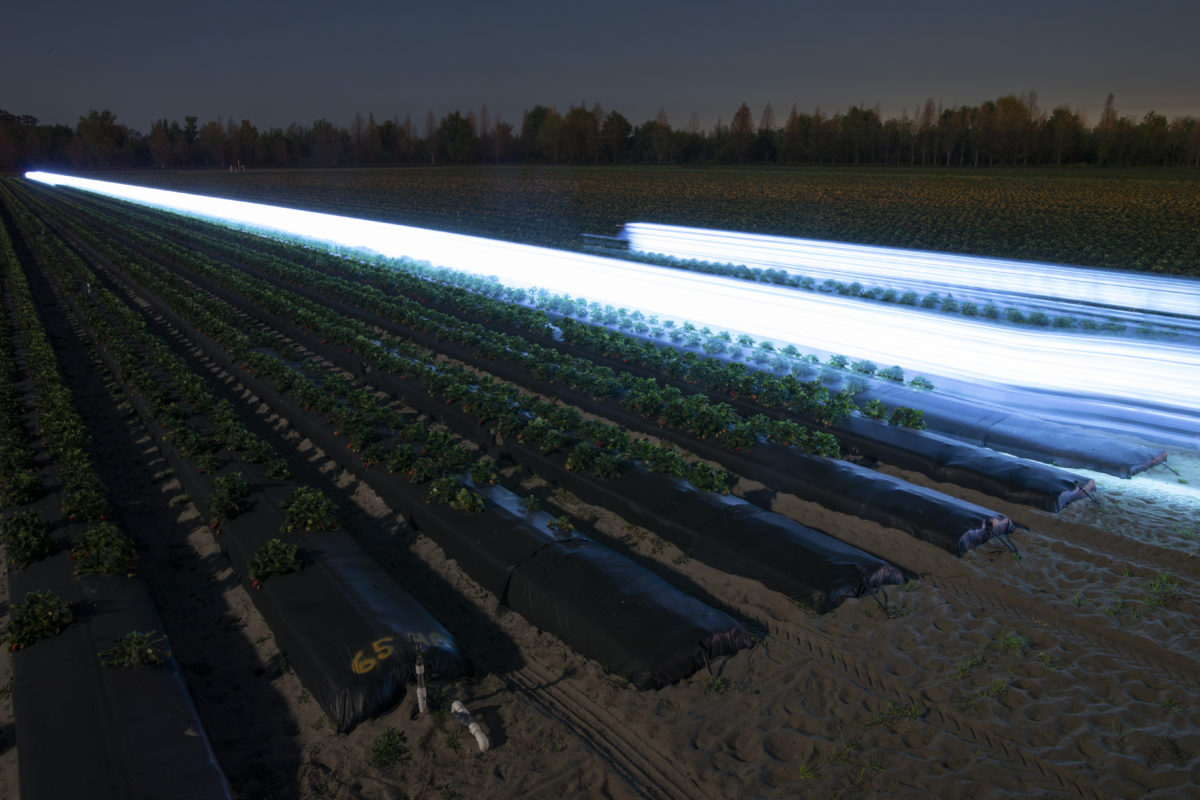Natalia Peres envisions a day when light from a machine that resembles a spacecraft helps prevent powdery mildew from causing much damage to strawberries.

Peres, a professor of plant pathology at the University of Florida Institute of Food and Agricultural Sciences, works with a global group of scientists studying how to use ultraviolet light to suppress plant pathogens. Powdery mildew is one such pathogen.
Peres and researchers at Rensselaer Polytechnic Institute (RPI) and Cornell University – both in New York state — are pioneering research on novel uses of light to suppress pathogens in several specialty crops. The group also includes scientists from Norway.
“It’s an exciting area, and our local strawberry growers have been great in allowing us to demonstrate the technology on their farms,” Peres said.
The team developed a tractor-drawn machine with several UV lamps. A breakthrough in the research took place when Norwegian researchers discovered that the treatments were more effective when applied at night, said Peres, a faculty member at the UF/IFAS Gulf Coast Research and Education Center in Balm, Florida.
The mildew pathogen evolved to survive natural UV in sunlight, Peres said. But part of that adaptation to sunlight resulted in the pathogen not being able to defend against natural UV light at night. So, nighttime UV applications bypass the natural defenses of the pathogen by delivering a small blast of UV light when the light catches the pathogen napping, Peres said.
The new technology has been tested at UF/IFAS Gulf Coast REC strawberry fields and at Wish Farms in Duette, Florida.
Similar trials are being conducted across North America and Europe by the research collaborators on crops such as grapes, hops and cucumbers, she said.
In addition to Peres, the multi-disciplinary research team includes scientists at RPI, Cornell, the Norwegian University of Life Sciences, the Norwegian Institute of Bioeconomy and the USDA Grape Genetics Research Unit.
“The blended expertise of this diverse team has been key to its success,” Peres said.
The research has been supported by grants from the USDA Specialty Crops Research Initiative, the USDA Organic Research and Extension Initiative, the Norwegian Research Council and state and regional commodity groups.
UV lamps are widely used in water purification and microbiological sterilization, according to scientists on the research team. But they’re not yet commonly used for plant-pathogen suppression, according to a USDA news release announcing the grant last year. “UV treatments applied once or twice weekly were as effective as the best available fungicides applied on similar schedules for control of strawberry powdery mildew,” Peres said. “It’s not a one-time fluke. The trials have been repeated successfully for three seasons now.”
Source: University of Florida Institute of Food and Agricultural Sciences










